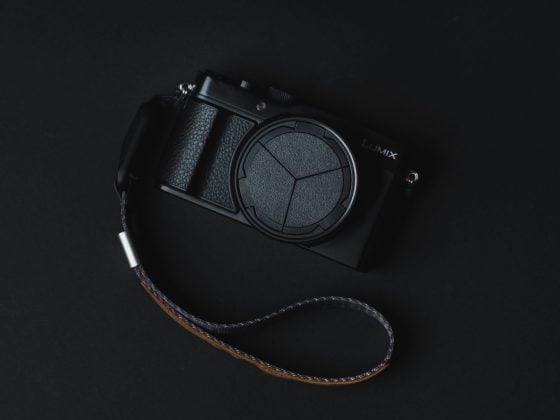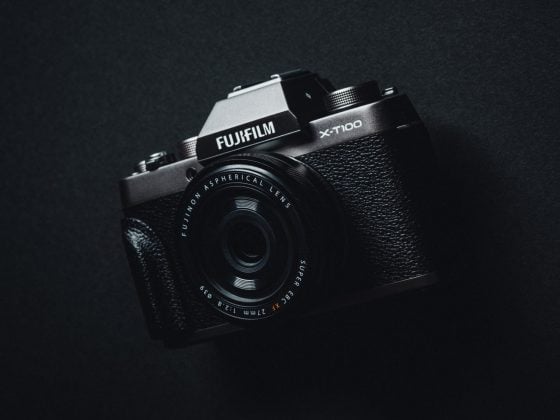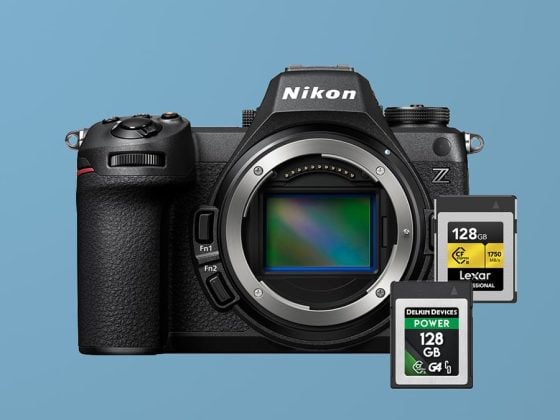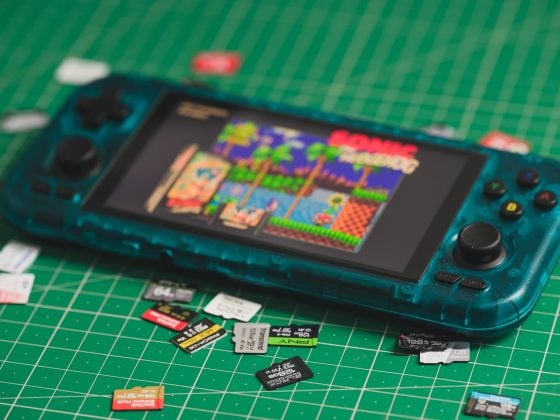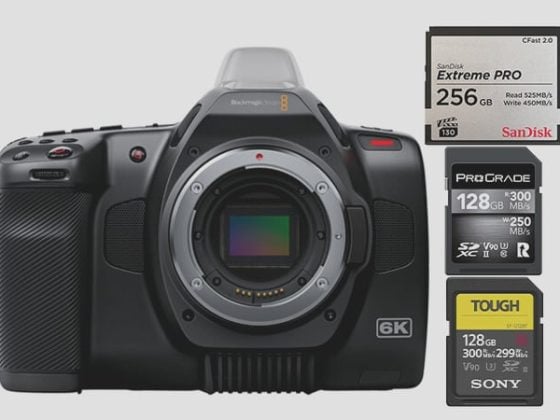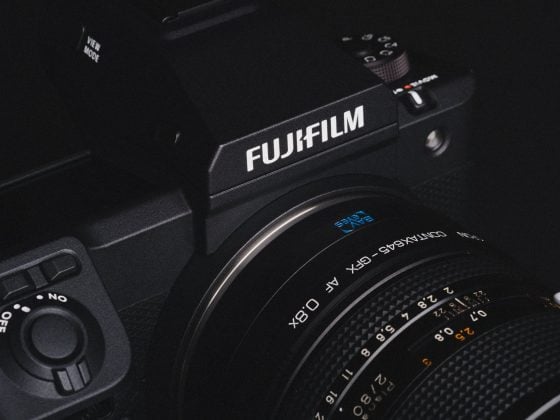The Fujifilm X-H1 may be the most capable camera I have ever tested and it is probably my favorite camera to date. The dual UHS-II memory cards with the incredibly fast buffer allow the X-H1 to put out some incredible performance with the right cards.
Use this guide to find the fastest memory cards for your Fujifilm X-H1.
Further down I’ll also explain what I know about the lockup issues with the Fujifilm X-H1 that many people are experiencing.
Fujifilm X-H1 Specs
Sensor: 24.3MP APS-C X-Trans CMOS III Sensor
Processor: X-Processor Pro Engine
Continuous Shoot: 14 fps Cont. Shooting
Est. Buffer Size: 1GB
Memory Card Compatibility: UHS-II / UHS-II
Time To Clear Buffer: 6.5 seconds (Sandisk Extreme Pro UHS-II 300)
Shots To Fill Buffer RAW: 30 (Sandisk Extreme Pro UHS-II 300)
Fujifilm X-H1 – Amazon / Adorama / BHphoto
Best Accessories For The Fuji X-H1
Fujifilm X-H1 | The Speed Test
Every few months there are some new UHS-II memory cards that come on the market. I try to buy those that are getting a lot of attention to see if they are actually worth it. Often times they are not. I’ve tested just about every popular memory card with the X-H1 and the results for the most part were impressive. Most cards work very well and perform according to their specs.
There was one strange issue I had, the rental camera I was using started labeling memory cards at 9000 even after formatting. Once I reached DSCF9999 I would get the error “!1 Frame No Full.” After messing with the settings for a bit, I finally got the camera to do a frame reset but it wasn’t doing it by default.
In terms of 4k Video, everything worked fine.
Use the chart below to see which cards are best for your needs.
| SD Memory Cards | USB 3.0 Read | USB 3.0 Write | Fujifilm X-H1 |
| UHS-II | |||
| Lexar 2000x | 272.7 MB/s | 244.5 MB/s | 154.16 MB/s |
| Sony G | 259.2 MB/s | 234.5 MB/s | 147.30 MB/s |
| Delkin V90 | 245.1 MB/s | 164.6 MB/s | 144.49 MB/s |
| Sandisk Extreme Pro 300 | 263.2 MB/s | 233.4 MB/s | 144.25 MB/s |
| Toshiba Exceria Pro | 258.8 MB/s | 226.5 MB/s | 143.63 MB/s |
| Adata V90 | 256.5 MB/s | 231.7 MB/s | 141.67 MB/s |
| Transcend | 290.2 MB/s | 182.1 MB/s | 127.20 MB/s |
| Fujifilm Elite II | 294.0 MB/s | 181.6 MB/s | 125.90 MB/s |
| Sandisk Extreme Pro 280 | 260.5 MB/s | 214.8 MB/s | 91.64 MB/s |
| Sony M | 253.2 MB/s | 91.62 MB/s | 82.23 MB/s |
| Delkin 1900X v60 | 273.3 MB/s | 97.3 MB/s | 80.86 MB/s |
| ProGrade v60 | 166.7 MB/s | 64.54 MB/s | 76.41 MB/s |
| Hoodman Steel 2000x | 268.7 MB/s | 183.9 MB/s | 66.09 MB/s |
| Lexar 1000x | 147.4 MB/s | 78.4 MB/s | 66.02 MB/s |
| UHS-I | |||
| Sandisk Extreme Pro U3 | 98.6 MB/s | 90.8 MB/s | 66.96 MB/s |
| Samsung Pro U3 | 97.7 MB/s | 78.6 MB/s | 66.79 MB/s |
| Kingston U3 | 98.1 MB/s | 90.4 MB/s | 66.21 MB/s |
| Samsung Pro+ U3 | 97.5 MB/s | 87.3 MB/s | 65.05 MB/s |
| Samsung Pro U1 | 96.3 MB/s | 82.2 MB/s | 64.59 MB/s |
| Delkin 633x U3 | 98.3 MB/s | 88.7 MB/s | 64.20 MB/s |
| Transcend U3 | 96.7 MB/s | 84.9 MB/s | 62.39 MB/s |
| Sony U3 – Old Model | 96.5 MB/s | 84.5 MB/s | 60.60 MB/s |
| Sandisk Extreme Plus U3 | 99.0 MB/s | 64.4 MB/s | 55.57 MB/s |
| PNY Elite Performance U3 | 96.5 MB/s | 66.1 MB/s | 54.23 MB/s |
| Lexar 633x U3 | 93.3 MB/s | 67.3 MB/s | 53.75 MB/s |
| Lexar 600x U1 | 95.4 MB/s | 64.8 MB/s | 53.43 MB/s |
| PNY Elite Performance U1 | 96.5 MB/s | 66.5 MB/s | 52.02 MB/s |
| Sony U3 – New Model | 96.7 MB/s | 56.2 MB/s | 49.11 MB/s |
| Sandisk Extreme U3 | 72.43 MB/s | 54.1 MB/s | 46.32 MB/s |
| Samsung U1 EVO | 47.7 MB/s | 21.96 MB/s | 20.19 MB/s |
| Sandisk Ultra U1 | 99.3 MB/s | 36.1 MB/s | 25.15 MB/s |
Fujifilm X-H1 Best Memory Cards
From looking at the results you can see that UHS-II cards are more than twice as fast as UHS-I cards. There is also a huge difference between the good, more expensive UHS-II cards vs. the cheaper brands or models.
Does this speed matter in the real world? It depends. If you are doing a lot of bursting you will really enjoy having a faster UHS-II card. I’ve personally found that you don’t always need the fastest UHS-II cards you can buy for the X-H1. Even a good UHS-I will perform well if you’re doing a moderate amount of bursting. For example, when I shoot street photography, I set my camera to a slow burst speed, and I’ll usually not blast more than 8 shots at a time. In these situations, a 60-70MB/s is more than capable of keeping up.
However, it is recommended by Fujifilm to use UHS-II memory cards in this camera.
Fujifilm X-H1 Top 3 Recommended Memory Cards
I will leave Lexar off the list since the brand was purchased by a Chinese memory company Longsys and it will be a completely different card when they release new versions.
Fujifilm officially recommends the Extreme Pro UHS-II, the Sony G, and the Toshiba cards. I love the Toshiba cards but they are hard to find in the USA but are everywhere in Japan.
The Fujifilm X-H1 has two memory card slots that both support UHS-II memory cards. This will allow you to maintain great speeds while still recording backup to a second card or using the second card as overflow.
In terms of memory card size, I’ve found 64GB to be the perfect size for travel and street as long as you clear your cards off every few days. For video you may want 128GB cards. The X-H1 supports card sizes up to 256GB.
Sandisk Extreme Pro 300 64GB
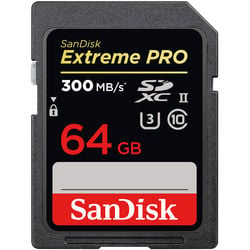 Sandisk memory cards really are the best for Fujifilm cameras now that the Lexar we all knew and loved is gone. While Lexar, Delkin, and Sony did outperform Sandisk by a few MB/s in this particular test, the speed difference is negligible and the Sandisk Extreme 300 cards are really worth it, especially considering they have a lifetime warranty.
Sandisk memory cards really are the best for Fujifilm cameras now that the Lexar we all knew and loved is gone. While Lexar, Delkin, and Sony did outperform Sandisk by a few MB/s in this particular test, the speed difference is negligible and the Sandisk Extreme 300 cards are really worth it, especially considering they have a lifetime warranty.
– Amazon
Sony G UHS-II 64GB
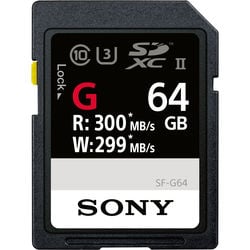
The Sony G UHS-II cards came out in early 2017 and are one of my top recommended cards. They work great in most cameras, especially Fujifilm cameras and even come with data recovery software you can download. The only downside is they only have a 1-year warranty. Sony also makes an M card that is much slower, but also less expensive.
– Amazon
Delkin V90 64GB
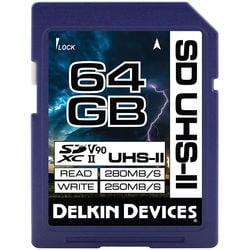 I personally use Delkin UHS-II cards a lot in my cameras as either a backup UHS-II card in slot two or even sometimes as a primary. They work great and are very fast. Just pay attention to the labeling when buying Delkin cards. There are V90 and V60 cards. For maximum speed, you want the V90 cards. They’ve recently updated their branding to Power and Prime to make this a little easier. You want the Power cards.
I personally use Delkin UHS-II cards a lot in my cameras as either a backup UHS-II card in slot two or even sometimes as a primary. They work great and are very fast. Just pay attention to the labeling when buying Delkin cards. There are V90 and V60 cards. For maximum speed, you want the V90 cards. They’ve recently updated their branding to Power and Prime to make this a little easier. You want the Power cards.
– Amazon
Other Cards To Consider / Cards To Avoid
There are a lot of brands floating around Amazon making memory cards now. For the most part, these are just white-labeled cards. In other words, these brands buy memory cards from one of the top factories and slap their own label on them. These will be cards like Hoodman, Fujifilm, etc. These cards are fine and will put out nice results, but it’s always better to get your cards from real brands like Sandisk.
As far as ProGrade cards, they are the new kids on the block. I haven’t had any issues with them and a lot of people are blaming them for the lockups reported by Jared Polin in his X-H1 review. I will continue to test their V60 cards. They recently released some V90 cards that I haven’t been able to get yet.
Fujifilm X-H1 Memory Card Lockup Issues
A lot of people are blaming memory cards for the lockup issues Fujifilm is having. I’ve been testing all the memory cards in Fujifilm cameras for over four years now and have noticed some patterns and behaviors of Fujifilm cameras that I will explain.
Every camera brand has memory card problems, bad memory card performance in the Fujifilm X-H1 isn’t unique to Fujifilm. I’ve received many comments and emails from Sony shooters having compatibility issues with U3 cards, Panasonic cameras have some serious issues especially with Lexar, and memory cards for the GoPro Hero6 and Hero5 especially have very serious problems, which is why I make these pages to help the community.
Fujifilm Memory Card Lockups
I don’t report on this very often but first discovered it back when testing the Fujifilm XT100s. Occasionally even good cards won’t be registered correctly by the camera. In other words, I’ll put in a Kingston U3 memory card ( a great card ) and it will perform very poorly, like a Sandisk Ultra or Samsung Evo. I’ll take the card out, clean it all up, put it back in, then all is normal again and I might never see the issues again.
If you’re having an instance of a lockup, it could be your card was not seated correctly, it’s dirty, or wasn’t initialized correctly when the camera was powered on. Some cards do this more than others. So far I’ve had experience with Transcend, and Kingston and I believe it even happened with one of the slower Sandisk UHS-II cards at one point in the past, now I’ll be testing ProGrade.
Update: With regards to ProGrade, I have noticed some inconsistency with the behavior of the cards when using them in Fujifilm cameras. Avoid them for now.
The solution?
Make sure your cards are clean, and not damaged, make sure you always seat your cards correctly, never force them, and don’t use microSD cards with adapters, also avoid white labeled cards like Hoodman Steel or budget cards like PNY.
Also, there is a rumor that Sandisk cards are very popular among counterfeiters, it might be better to go with Sony G cards if you buy from Amazon. Otherwise, just buy your cards from a real store. BHphoto, Adorama, Bestbuy, etc. Of course, those are just rumors and I don’t act on them until I’ve experienced it for myself.
Also, some memory card companies will put out a bad batch occasionally, or maybe it’s just some experimental flash configuration, I’m not sure what’s happening, but this happened with Lexar back in 2015-2016, as that was the year I got lots of reports of people having issues with Lexar cards. PNY put out a bad batch back in 2014 that made their cards mostly unusable in Sony cameras ( just my observations based on feedback I get ). Samsung U3 cards still don’t work correctly in Sony cameras based on my tests.
It’s not always the card, sometimes the memory controller in the cameras has issues and camera companies are at the mercy of other companies that make many of these components. I’ve seen one Sony camera work fine with one card, then another Sony camera with all the same specs reject it, but the cameras had no other issues, you just had to change the model of the card for one particular camera.
Fujifilm Lockups | Other Problems
There is one other problem Fujifilm is still having with connection issues while using their vertical battery grips. I was getting this issue a lot in my X-T2, it seems firmware helped but I’ll still get it.
When you’re using the vertical grip for a camera like the X-H1, you don’t just drain one battery, but you’ll use one battery in the grip plus one battery in the body at the same time. This is why you’ll notice your internal battery draining very slowly when using the grip batteries.
This allows for a more aggressive discharge when you can use two batteries at one time and this allows you to have features like fast frame rate in the EVF, or increase shutter speeds.
If you’re using the grip and it has a disconnect while you’re using a battery from the grip and the internal battery at the same time, you won’t get a power loss, you’ll just get a lockup as the camera won’t have enough power to complete the current tasks.
I think these lockups could be a battery grip issue because my Sony A7r used to do the same thing when I was using a metabones adapter with 3rd party batteries. The battery did not have enough power to focus the Canon lens, the adapter, and the camera body. There was just not enough power to juice all the components.
Probably all of this is fixable with firmware by nerfing the camera somehow, but the battery grip connection drops could also be an issue with the contacts.
With the new IBIS in the X-H1, it seems Fujifilm is pushing the limits of their batteries and it doesn’t take much to overdo it.
I believe Fujifilm is working on a battery upgrade for future cameras and hopefully, they won’t need to stripe the batteries for improved performance.
Finding The Best SD Memory Cards Fujifilm X-H1
When buying memory cards, always make sure you buy from a trusted dealer. Adorama, BHPhoto, Best Buy, and Amazon are all good sources. If you buy from eBay, you have a very high risk of getting fake memory cards, so as a word of caution, never buy memory cards from Ebay.
Best Memory Card 4k Video Fujifilm X-H1
The Fujifilm X-H1 puts out 200mbps video which translates to about 25MB/s. Any card that clears this number with in-camera write speeds will work for 4k video. This may make you want to buy cheaper slower cards, but remember you have to transfer your footage to a drive. If you’re in the middle of a production, slow cards could slow you down and I would buy UHS-II memory cards with a higher read rate and a nice UHS-II memory card reader. Since you don’t need a fast write speed, you can get away with using some of the slower UHS-II cards that still have fast read speeds. This would be cards like the Delkin Prime, which have a USB 3.0 read speed of 273MB/s but only an in-camera write speed of 80MB/s. Great for video!
You will notice the Fujifilm X-H1 breaking up long video clips into smaller chunks. This is called chaptering and it does this because the camera is only using a fat32 format with the memory cards. Currently, there is no way around this.
If you use software like Premiere, you can bring all your broken-up clips and combine them into one subclip so they can be edited like one long clip.
UHS-II vs. UHS-I Memory Cards In The Fujifilm X-H1
With the Fujifilm X-H1, you can get by using UHS-I memory cards if you’re just casually shooting. You’ll find they are less expensive and still have incredible performance. Actually, until recently Fujifilm cameras have always smoked the competition with UHS-I memory card speeds. UHS-I cards in Fujifilm cameras perform almost as fast as UHS-II cards do in Panasonic cameras as example.
If you’re doing a lot of burst shooting, it will be worth buying the top-performing UHS-II cards. If you’re shooting video, just get UHS-II cards that have decent write speeds but fast USB read speeds and you’ll be fine.
Best Memory Cards Fujifilm X-H1 | Bottom Line
The Fujifilm X-H1 was the best APS-C camera at the time of its launch. The performance and features are just insane.
Because the camera is so versatile, it’s hard to say which cards are perfect for you. Spots, action, and wildlife photographers will want the fastest UHS-II cards they can get, while a video shooter who doesn’t need fast write speeds might want cards with just fast read speeds for quick offload times.
With a few nice cards, you can do just about anything with this camera. While UHS-II is tempting, they aren’t always needed for the average Joe just shooting casual photography. Or you can do what I do and buy a UHS-II card for slot one, then leave a slower UHS-I card in slot II for JPEG backups or for overflow. I actually shoot with a really fast 32GB card in slot one, then a 64GB UHS-I card in slot II. This gets me through most situations.
| **This website contains affiliate links. We will earn a small commission on purchases made through these links. Some of the links used in these articles will direct you to Amazon. As an Amazon Associate, I earn from qualifying purchases. |


